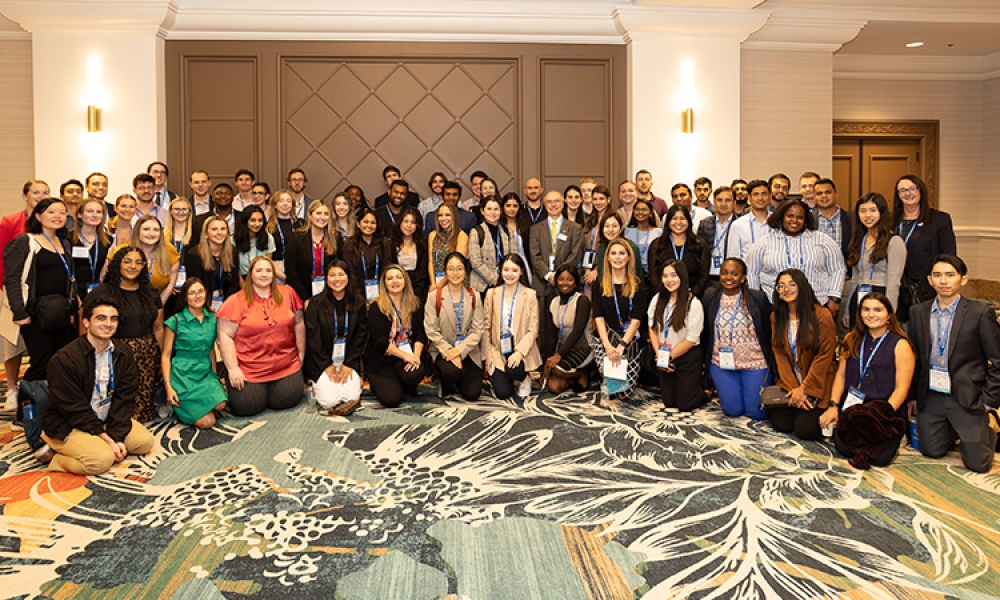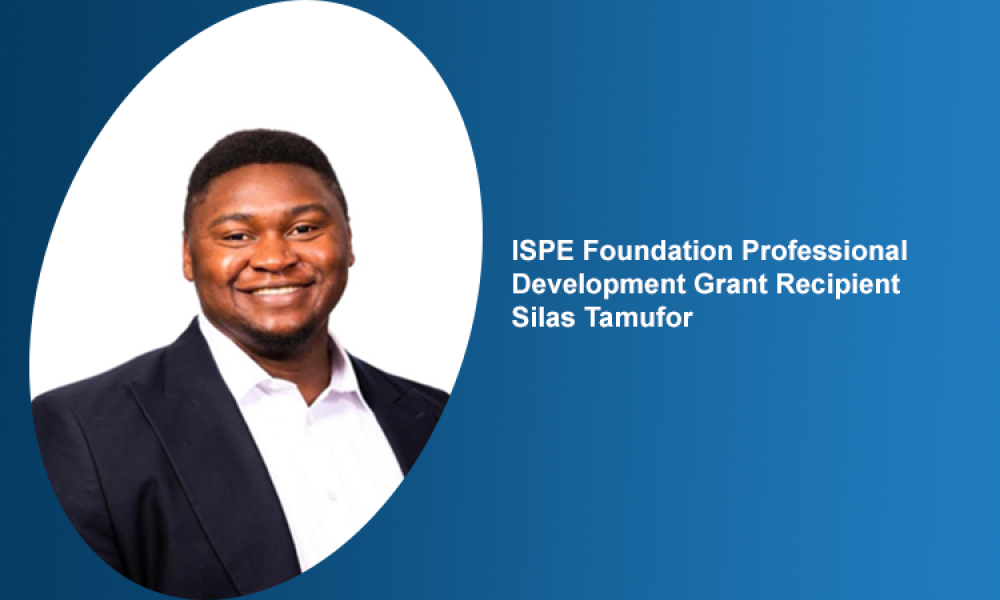cGMP Crossroads: Intersection of University & Pharma Research

On Monday 19 September, as part of the Facilities and Equipment track at the 2016 ISPE Annual Meeting & Expo, a three-part discussion examined current good manufacturing practice (cGMP) issues in collaborations between universities and pharmaceutical companies.
Design of Phase 1–3 Facilities
The session opened with a presentation by Terry Jacobs, AIA, Partner, JacobsWyper Architects, on cGMP manufacturing in the university setting. It followed “The CAR T Revolution in Treating Leukemia,” a great keynote speech given the day before by Stephen Grupp, MD, PhD, Children's Hospital of Philadelphia. “What is the intersection of academia and the pharmaceutical industry?” he asked, as the screen displayed a photo of a couple dancing at a traditional Jewish wedding as an analogy. “It’s sort of like this: You dance together without touching.” Quoting from “How Academia and the Pharmaceutical Industry Can Work Together,” a 2013 article published in the Annals of the American Thoracic Society by Dr. Michael Rosenblatt, then the chief medical officer at Merck, Jacobs noted, “There is a long history of productive collaboration between biomedical scientists in academia and in the pharmaceutical industry. The primary beneficiary of this collaboration has been the public. Since the middle of the last century, marked advances in the treatment and prevention of disease has been driven by the translational research interactions across these two domains.”
Common Goals, Different Interests A partnership between the pharmaceutical industry and academia gives universities financial resources and intellectual property they would otherwise not be able to access, as well as the opportunity to test their research in clinical trials. The industry gains access to valuable and innovative studies at a faster rate. This collaboration improves patients’ lives by developing new and better medications while creating more research opportunities and economic development for both partners. While pharmaceutical companies have long looked to academia for innovation, collaboration began to increase after 1980, when the Bayh–Dole Act allowed nonprofits to pursue ownership of patents from federally funded work. As of 2011, there were approximately 40 to 45 US academic centers with GMP facilities in the United States. One example is the Novartis–Penn Center for Advanced Cellular Therapeutics at the Perelman School of Medicine at the University of Pennsylvania. Funded in part by a $20 million investment from Novartis, the R&D facility will pursue personalized cellular therapies for cancer. “The future of academic-industry collaboration includes corporate venture capital funds, academic drug discovery centers, risk sharing, competitive grants, and even manufacturing,” said Terry, quoting the Tufts Center for the Study of Drug Development. “What is happening now is the start of universities manufacturing clinical phase 1, 2, and 3 drugs.”
Cyclotrons and cGMP Production Facilities
What cGMP issues emerge when these two entities join forces? To answer this question, Richard Freifelder of Freifelder & Associates Consulting presented case studies of two cyclotron facilities: one at the University of Pennsylvania Perelman School of Medicine, the other at the University of Chicago Biological Sciences Division. Installing a cyclotron, which produces radioactive isotopes for injectable drugs, is a challenging operation under any circumstances, but doing so becomes even more complex as part of a legacy space redesign or renovation. Penn’s facility underwent a partial renovation of a 5,000-square-foot (sf) non-cGMP building. The redesign added another 3,000 sf, a second cyclotron, and cGMP certification. The facility, which was already producing a clinical drug, continued to operate during construction. The Chicago cyclotron facility—9,500 sf of unoccupied space, also in an existing building—was a complete teardown designed from the start to be cGMP.
Lost in Translation “Academia and pharma don’t speak the same language,” Dr. Freifelder said. “Most academic settings are not appropriate for pharmaceutical manufacture, especially when you’re working with radioactivity, and we work with a lot of radioactivity—6,000 millicuries in one run,” he explained. “There are 5–15 in an average PET scan.” Most importantly, Richard continued, “academia has to learn to ‘speak’ regulatory. This is not a lab, it’s a bioproduction facility.” The Penn renovation and its experienced production staff were able to operate during construction, although workflow was sometimes compromised. Equipment had to be revalidated after it was moved, but its location in a freestanding building made shutdowns easier. After construction was complete, the facility passed FDA inspection for cGMP compliance, and completed a successful ANDA. But inadequate understanding of cGMP and the addition of inexperienced research staff led to 483s on reinspection. In Chicago there were no operations to interrupt, and the complete redesign of the space allowed the team to create an improved workflow design for clinical research, with cGMP emphasized from the start. Here the facility was within a hospital where shutdowns were difficult; in addition, the division within which the cyclotron facility was to work had no regulatory or cGMP experience. In this case the “language barrier” created incompatibility between professorial freedom and cGMP; as a result, senior administration decided that research would remain separated from production.
Expectations and Experience Challenges emerged in both projects: How do you cascade rooms when working with radioactivity? Pressurizing a cyclotron space to contain radiation is another complexity; shielding takes up valuable space and is expensive. “We learned a lot of good lessons” in these projects, Richard concluded. “Both needed a knowledgeable partner and good architectural and engineering people. You have to have someone who knows something to form that partnership.”
Virus Vector Lab Case Studies
Eric Bohn, AIA, Partner, JacobsWyper Architects, presented two other lab conversion case studies from the University of Pennsylvania Perelman School of Medicine. One was a lentivirus production facility built in the 2015, the other was an adenovirus facility designed in 2014. Both facilities are GMP facilities that produce virus vectors for gene therapy that delivers nucleic acid polymers to patients’ cells. Where the cyclotron facilities required isolation for radioactive material, however, the Penn labs had to meet CDC-mandated biosafety classifications to contain both of the biological agents, which represented a potential hazard to people and the environment.
Cell Culture A typical cell culture room at Penn consists of a dedicated lab space with simple equipment such as a biosafety cabinet, centrifuge, incubator, a sink for handwashing, and negative room pressurization. “This is what the university knows,” Bohn said, “but we had to build a GMP facility.” At the lentivirus facility, vector production was centralized in the main room, with one-way traffic flows for entering and exiting personnel and material. Production space air pressurization is positive; the gowning and vestibule suite is negative to contain the virus. The facility has a dedicated air-handling unit (AHU). “These considerations are unusual for universities,” Eric said. “They had to get used to them.” The adenovirus lab project was more complex, with the GMP suite being developed as a multiproduct facility. Like the lentivirus facility, the production room pressurization was positive to protect the product; the rest of the suite was negative to contain the virus. Unlike the lentivirus lab, however, the facility’s AHU also serviced other parts of the building. Due to its need to be qualified, this became problematic when the facility design was reviewed by the FDA.
Regulatory Response To provide appropriate containment and prevent cross-contamination, the agency requested a dedicated, commissioned, and qualified AHU, as well as individual airlocks on production rooms. More critical areas (aseptic processing), they said, should be maintained at higher pressure. Regulators wanted risk assessment and detection methods that would identify contamination between different vector products, as well as contamination between two transgene products from the same vector. The agency also wanted assurance that personnel could not enter a live vaccine processing area if they had worked with other infectious agents in any other lab during that same day. “That was quite a surprise to the university,” Eric noted. “They’re not naturally inclined to GMP spaces in physical construction.” The bottom line, as Richard noted, is that if academia wants to work with pharma, the two must join forces and move forward. Learning to speak the same language is the first step. Both parties must also find a balance: freedom for academic discovery, but rigid control for production, the industry’s domain.
2017 ISPE Annual Meeting & Expo Receive content, like the blog post above, by attending the pharmaceutical event of the year, the 2017 ISPE Annual Meeting & Expo, in sunny San Diego, California, USA, 29 October - 01 November, 2017. With multiple education tracks to choose from, the education opportunities are unlimited as you gain the latest pharmaceutical industry knowledge and network with top industry professionals. Don't miss out! Early registration deals are available now - register today!



